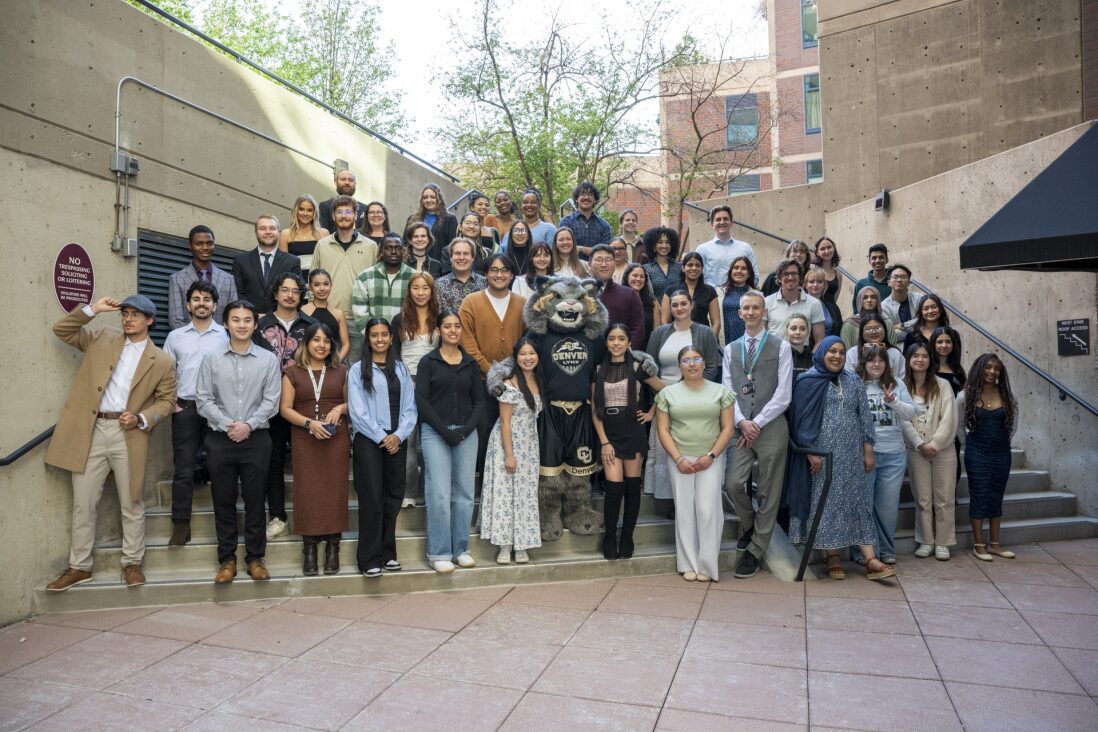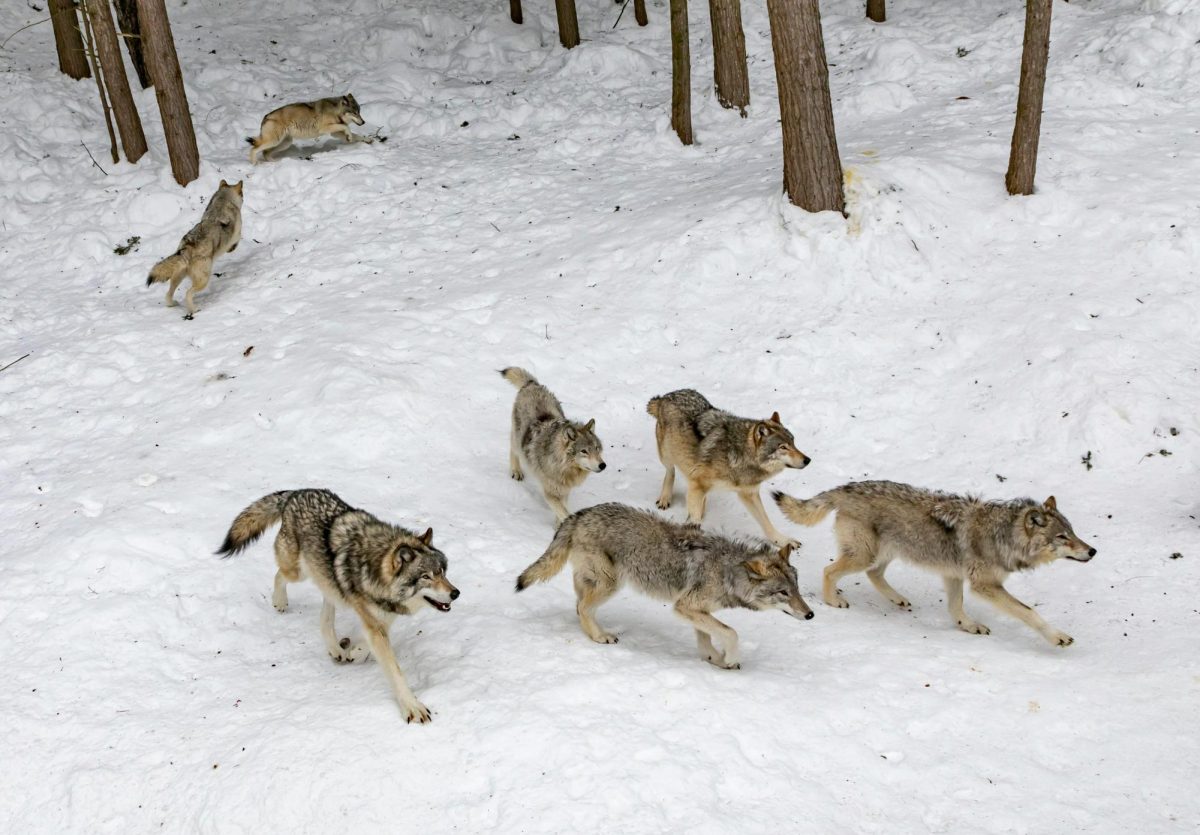It took over three years, but ten gray wolves were finally released in Grand and Summit counties last December. Proposition 114 caused quite the stir, especially in rural Colorado areas. Though the gray wolf is native to the Rockies, they were eradicated by hunters and ranchers by the 1940s, mainly because of the frequent attacks on livestock, due to the depletion of the wolves’ natural prey in the late 1800s (primarily bison, elk, and moose). Colorado’s ranchers have remained wary of the wolf reintroduction, largely over concerns for their livestock. The good news is that, since the wolves have been formally reintroduced, there is now legislation that protects ranchers, and has increased accessibility to technology that reduces the likelihood of wolves attacking livestock.
For example, Proposition 114 enables ranchers to be compensated for depredations proved to be caused by wolves. Ranchers can receive reimbursement of up to $15,000, depending on the fair market value of the animal, as well as the cost of veterinary treatment for those injured.
On top of that, Colorado Parks and Wildlife and Wildlife, USDA, and Colorado State University Extension as well as other groups in Colorado, such as Working Circle, collaborate with ranchers to explain and install non-lethal predator mitigation techniques. Many of these techniques are relatively simple and comparatively inexpensive. Since wolves have neophobia (a fear of new stimuli), flashing lights, loud noises, and fladry—which involves the hanging of brightly-colored flags along the fence to the property—are enough to scare them away from that specific area.
”We do see that fladry is effective for a short period of time,” Mireille Gonzalez, co-founder and research associate for the Center of Human-Carnivore Coexistence (CHCC) at Colorado State University, explained. “Once they see it over and over again, it’s no longer new.”
Other techniques, like electric fencing, tend to have longer-lasting effects. Some of these techniques such as range riding are more labor intensive, as they involve a field hand riding a horse or on an ATV, and managing livestock, to ensure that no stragglers are susceptible to being attacked by predators. On top of this, range riders are able to survey the fields and livestock, to make sure all animals are healthy. Since wolves generally avoid humans and densely-populated areas, the presence of humans is a great deterrent for them.
Another approach is carcass removal. If a cow dies and the carcass remains on the ranch, it attracts predators, who might also attack living livestock. Quickly burning or burying the carcasses are some ways to avoid this problem.
Over the past three years, Summer Merrell has been studying the relationship between ravens, magpies, and gray wolves with CU Denver researcher and professor, Diana Tomback, at the Colorado Wolf and Wildlife Center. Specifically, the two are interested in the way common ravens and black-billed magpies interact with gray wolves when they are feeding or scavenging for food within gray wolf enclosures.
”In the wild, corvid and wolves have interacted for a millennia. Ravens are actually known as wolf birds, because ravens follow wolves to food, and it’s even been reported that wolves follow ravens to food,” Merrell told a Sentry reporter.
Merrell and Tomback’s research is mainly concerned with the relationship between gray wolves and the highly intelligent bird family, Corvidae. One question they ask is whether the wolf-corvid relationship is just opportunistic or whether the two species coevolved.
”It’s just a look through a sanctuary lens at that relationship that we know exists in the wild, and seeing if the birds are hardwired evolutionarily to still interact with the wolves, because they don’t need to,” Merrell said. “There’s food elsewhere, and wolves haven’t been here for around eighty years. Until now, of course.”
The research team has found that the wolves are highly tolerant of the birds—they usually don’t mind the birds feeding near them, but there can be an occasional casualty. Both bird species have an incredibly high success rate for obtaining food in the wolf enclosures.
The eradication of wolves affected the population of many other species, outside of just ravens and magpies, though it’s still unknown whether the reintroduction will positively affect the greater Colorado ecosystem. In Yellowstone National Park’s northern range, the return of wolves has resulted in the regrowth of streamside willows and cottonwoods, as well as aspen stands. But researchers are unsure how the reintroduction will affect Colorado’s biodiversity. Since wolves feed on the weak and vulnerable, according to CPW, they could have “beneficial effects” on the prevalence of chronic wasting disease in Colorado—a fatal disease affecting wolves’ primary prey: deer, elk, and moose. Still, there is little overlap between areas in which wolves currently reside and areas where chronic disease is prevalent, so it’s impossible to say whether the spread of the disease will be curbed.
Regardless, the gray wolf population is currently small in numbers. CPW is hoping to release 30-50 wolves over the next 3-5 years, but it still remains to be seen whether or not Colorado’s gray wolf population will thrive. Prior to the reintroduction, in 2021, a male and a female wolf were seen traveling together, before having six pups. In February 2023, the male wolf was spotted with one of his pups. In December 2023, ten gray wolves were released into Summit and Grand counties. Since then, one wolf has died, likely from natural causes. CPW’s primary goal of the wolf reintroduction is to “identify the steps needed to recover and maintain a viable, self-sustaining wolf population in Colorado, while concurrently working to minimize wolf-related conflicts domestic animals/livestock, other wildlife, and people.”
Though many researchers believe that the wolf reintroduction will positively affect Colorado’s biodiversity, there are still concerns about impacts on a small number of ranchers.
“Our center, and myself, didn’t take a stance on whether or not wolves should be here,” Gonzalez stated. Still, conservation is very important to her, and she added, “I am passionate about coexistence. Coexistence by ensuring thriving human endeavors, and sustainable, viable carnivore populations by reducing conflict between people and carnivores, and social conflict between people about carnivores. I’m passionate that carnivore and other wildlife populations are cared for, and thrive, but also making sure that human wellbeing and livelihood thrive. We have dignity and respect for all communities that care about wildlife populations.”
Regardless, all of us city-dwellers will be completely safe from the gray wolves—it’s the occasional rancher who might be negatively affected. Luckily, Colorado Parks and Wildlife and organizations like Working Circle and CHCC are able to help reduce livestock depredation, which in turn protects wolves.

















